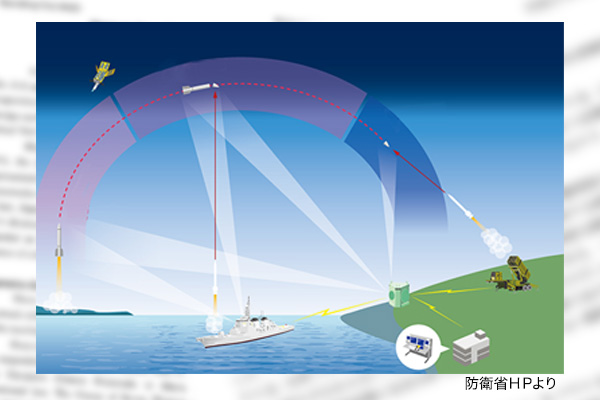Japan should turn its cancellation of a plan to deploy Aegis Ashore ground-based missile defense systems into an opportunity to possess ability to attack the source. Defense Minister Taro Kono was naive when he decided to suspend the plan for the reason that boosters to be detached from missiles after their firing could not be accurately dropped on training ranges. But Japan should take this opportunity to revise its extremely strict idea of “exclusively defensive posture” that has bound Japan’s defense policy and cooperate with the United States in developing counterattack and other capabilities to deal with new threats including missiles of irregular trajectory.
New missiles that cannot be intercepted
In May, Japan’s Defense Ministry gave up on deploying the Aegis Ashore system at the Araya training range of the Ground Self-Defense Force in Akita Prefecture, following the finding of misses in survey data for the selection of the deployment site. On top of the May decision, Minister Kono suddenly announced in June the suspension of the plan to deploy Aegis Ashore systems in Akita and Yamaguchi prefectures, prompting a senior government official to comment that the Defense Ministry is “unreliable.”
After the suspension, an aide to Prime Minister Shinzo Abe privately said that the government would take advantage of the Defense Ministry’s blunder to turn around defense policy. Abe recognized Kono’s approach on the Aegis Ashore plan as problematic as Kono came up with the suspension without taking due procedures within the government and ruling parties or considering alternative measures. Explanations to the U.S. were also insufficient. Nevertheless, Abe eventually approved Kono’s decision, concluding that the government should take this opportunity to thoroughly revise its missile defense policy as a whole to include the possession of strike capabilities to enhance deterrence.
The conclusion was not a simple whim but a decision based on discussions accumulated on missile defense since the launch of the second Abe administration in 2012. At a meeting in 2018 of the government’s advisory board, the Council on Security and Defense Capabilities in the New Era, a council member proposed that the government discontinue to describe Japan’s defense posture as exclusively defensive amid the improvement of missile capabilities by hostile countries. The proposal was encouraging for Abe, but unlikely to be understood generally then. An urgent issue then was how to respond to North Korean ballistic missiles.
From 2016 to 2017, North Korea fired 40 ballistic missiles and conducted three nuclear explosion tests. Facing what Abe termed a “national crisis,” the government decided to deploy Aegis Ashore systems. In 2019, however, North Korea fired new short-range missiles including those that flew irregular trajectories at low altitude, indicating intensions to break through missile defense systems. It was then pointed out that Japan needs to address new threats.
Free Japan from “exclusively defensive posture”
“While we plan to discuss policies under the concept of exclusively defensive posture, I question if we should remain bound by past discussions at a time when other countries upgrade their capabilities. We must get to the core of deterrence,” said Abe at a press conference on June 18 in which he offered to revise the National Security Strategy. “Peace would not be what we are given by others but what we must win for ourselves.”
To overcome the blunder regarding the Aegis Ashore plan, the government should specify measures for materializing the Abe remark in the new NSS and promptly put them into practice.
Takashi Arimoto is a publisher of Monthly Magazine SEIRON at the Sankei Shimbun newspaper.


